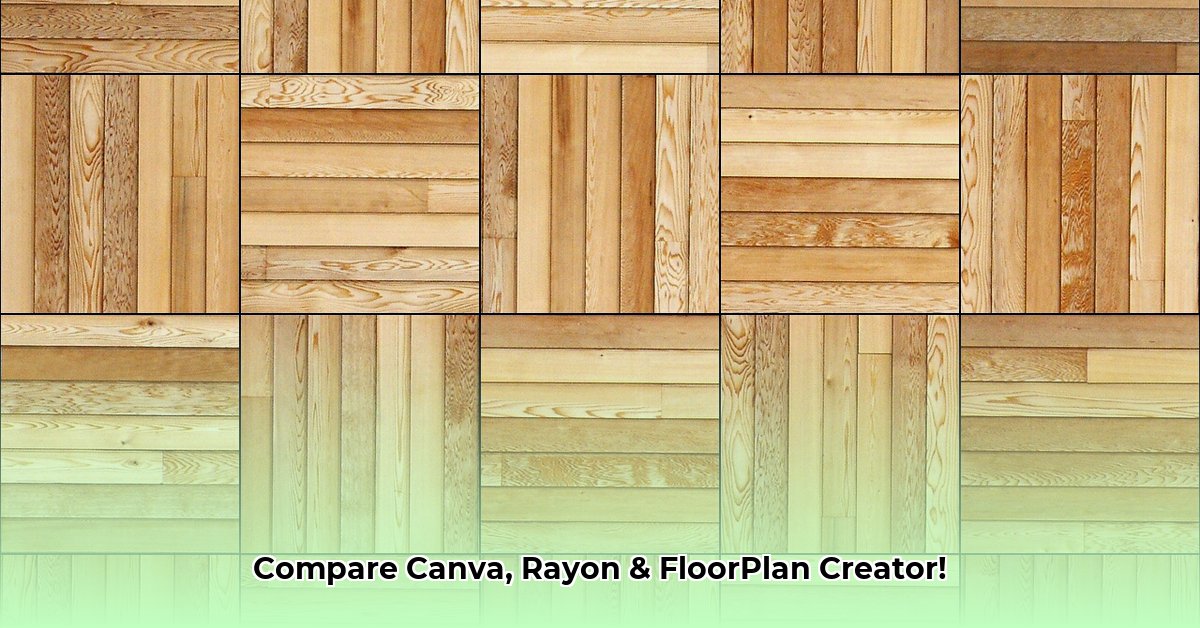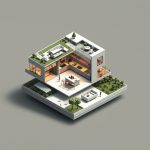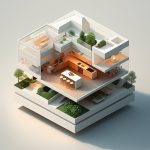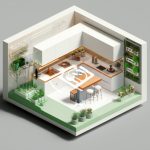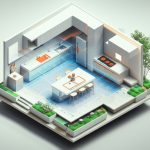Choosing the right software is a critical decision that can significantly impact the success of your interior design projects. A well-crafted floor plan is the foundation of interior design, and thankfully, numerous online tools are available. For more online options, check out this online floor plan tool. This review offers a detailed comparison of three excellent options: Canva Whiteboards, Rayon, and Floor Plan Creator. We’ll dive into user experience, feature sets, and market competitiveness, providing insights to help you select the ideal tool. Whether you’re an experienced professional or just beginning your journey, this guide helps you create amazing floor plans for projects of any size.
Interior Design Software Showdown: Canva vs Rayon vs Floor Plan Creator
Selecting the right software to design floor plans can feel like a daunting task. To simplify matters, let’s compare three popular choices: Canva Whiteboards, Rayon, and Floor Plan Creator. Each platform offers unique strengths and weaknesses, making the ideal choice contingent on your specific project needs and expertise. Let’s explore which software is best for designing floor plans.
Canva Whiteboards: Design Floor Plans for Beginners
Canva Whiteboards is an excellent choice for those seeking a straightforward, easy-to-use tool for creating basic floor plans. Think of it as a digital whiteboard—perfect for sketching quick ideas or producing rough layouts. Its intuitive drag-and-drop interface is incredibly beginner-friendly, making it ideal for those new to design or those needing quick visual aids. The expansive library of images, fonts, and elements allows you to enhance your designs, even without extensive design experience. However, it lacks the precision and advanced features needed for professional architectural documents. Canva excels as a brainstorming tool for generating initial concepts but isn’t suited for detailed blueprints.
Pros:
- User-Friendly: Easy to learn and use, even without prior design experience.
- Visual Appeal: An extensive library of elements enhances the visual appeal of the floor plans.
- Collaboration: Simplifies collaboration on design projects.
Cons:
- Limited Precision: Lacks the detailed tools required for complex projects needing precise measurements.
- Basic Features: Does not include advanced features offered by more professional software.
- Export Limitations: Basic export options may restrict sharing work in various formats.
Rayon: The Professional Choice for Quick Floor Plans
Rayon is tailored for interior designers and architects who value both speed and professional-quality results. This software has pre-designed professional templates that significantly reduce design time. If you need to create high-quality floor plans quickly, Rayon is a practical choice. The streamlined workflow enhances project efficiency, but the template-focused approach might feel restrictive for designers valuing complete design freedom. It provides a collection of pre-cut materials, excellent for fast construction but less ideal for crafting entirely bespoke designs.
Pros:
- Professional Templates: Saves time with high-quality, professionally designed starting points.
- Efficient Workflow: Streamlines the design process, accelerating project completion.
- High-Quality Output: Produces polished, professional-looking floor plans suitable for client presentations.
Cons:
- Limited Customization: Template reliance may limit the extent of unique design customizations.
- Creativity Constraints: Some designers might find it less flexible than having absolute control.
- Advanced Feature Gaps: Supplemental tools may be required for specialized functions not included in the core software.
Floor Plan Creator: The Architect’s Tool for Precise Designs
Floor Plan Creator is the best option for architects and builders requiring exceptional precision. Its compatibility with laser measurement tools ensures accurate dimensions, crucial for construction documentation. Advanced export options simplify sharing plans with contractors and other professionals. However, be aware of a steeper learning curve; this powerful software demands technical expertise. It offers incredibly precise features that require significant training. Floor Plan Creator supports various laser distance meters via Bluetooth, enabling direct input of measurements into the design. Supported brands include Bosch (GLM series), Hersch, Hilti, Leica Disto, Mileseey, Stabila, Suaoki, and CEM.
Pros:
- Pinpoint Accuracy: Provides highly precise measurements vital for construction-ready documents.
- Advanced Export Options: Versatile export options facilitate easy sharing with clients and collaborators, including DXF, SVG, and PDF formats.
- Professional-Grade Features: Includes tailored features for architecture and construction industry professionals, such as automatic calculation of room areas, wall lengths, and symbol counts.
Cons:
- Steep Learning Curve: Mastering the comprehensive feature set requires considerable time and effort.
- Complexity: It can be excessive for simpler projects or users without a professional design background.
- Price Point: Higher cost due to its advanced and sophisticated capabilities.
Interior Design Software Comparison: Features and Use Cases
This table will summarize the key differences between the three software options to help you make a more informed choice.
| Feature | Canva Whiteboards | Rayon | Floor Plan Creator |
|---|---|---|---|
| Ease of Use | High | Medium | Low |
| Precision | Low | Medium | High |
| Professional Templates | Limited | Abundant | Limited |
| Price | Freemium | Subscription | Subscription/One-time payment |
| Best For | Casual users, quick sketches | Professional designers, quick project starts | Architects & Builders, precise plans. |
| Laser Measurement Compatibility | No | Limited | Extensive (Bosch, Hersch, Hilti, Leica Disto, Mileseey, Stabila, etc.) |
| File Export Formats | JPG, PNG, PDF | DWG, PDF, JPG | DXF, SVG, PDF, Image |
Ultimately, the best software depends on your specific needs, budget, and technical proficiency. Prioritize the features that are most important to your work and choose the tool that best aligns with your design workflow. Remember, there is no universally “best” option—the ideal choice maximizes efficiency and makes your design process enjoyable.
Interior Design Software Guide: Best Choices for Professionals
Selecting the right interior design software can be daunting with so many options available. This comparison of Canva, Rayon, and Floor Plan Creator will simplify the decision-making process by exploring their strengths and weaknesses, helping you make an informed choice. How can your projects benefit from these design giants?
Canva: The Versatile Design Solution
Canva’s intuitive interface makes it incredibly user-friendly, providing a significant advantage for beginners. While it’s not specifically designed for architectural drawings, its versatility is excellent for creating mood boards, presentations, and client communication materials. What are the top pros and cons?
- Pros: Easy to learn, affordable, and has an extensive template library, great for visual communication.
- Cons: Limited advanced features for detailed floor plans and might lack precision for complex projects.
Rayon: The Rising Collaborative Star
Rayon is a newer player making waves with its focus on collaboration and 3D modeling. Built for teamwork and seamless sharing. Its 3D capabilities are impressive, allowing for immersive visualizations. Is this best for collaborative work?
- Pros: Strong 3D modeling, collaborative features, and a modern interface.
- Cons: Steeper learning curve than Canva, potentially more expensive, with an evolving feature set.
Floor Plan Creator: The Expert Tool
Floor Plan Creator focuses on floor plan creation, providing tools for precise measurements and detailed layouts. While it might lack the visual flair of Canva or the 3D rendering power of Rayon, it excels at delivering accurate functional floor plans. What are the main advantages?
- Pros: Offers precision and accuracy, dedicated to floor plans, and is relatively easy to master.
- Cons: Less versatile than other options, limited 3D capabilities, and lacks the collaborative features of Rayon.
Interior Design Software Comparison Table: Feature Prioritization
Making the right choice depends on your specific project needs, leading you to ask, “Which software should I choose?”
| Feature | Canva | Rayon | Floor Plan Creator |
|---|---|---|---|
| Ease of Use | High | Medium | Medium |
| 3D Modeling | Limited | High | Limited |
| Collaboration | Basic | High | Basic |
| Price | Affordable | Mid-range | Mid-range |
| Focus | Visual Communication | 3D Modeling & Collaboration | Floor Plan Creation |
| Target User | Beginners, Marketing | Interior Designers | Architects, Builders |
Key Takeaways:
- Canva is your go-to for quick visuals and client presentations.
- Rayon excels in collaborative 3D modeling.
- Floor Plan Creator is the precision tool for accurate floor plans.
Remember to try free trials or demos to experience the software firsthand and determine which best suits your workflow. How to choose the best interior design software for professional use boils down to careful consideration of your project needs and design style.
Floor Plan Creation Simplified: Designing Small Spaces with Canva
Let’s explore designing small-space layouts using Canva. Is it the perfect tool? Let’s investigate its features and
- Black and White Kitchen Backsplash: Ideas for Timeless Style - November 4, 2025
- Kitchen Backsplash Ideas: Fresh Looks to Upgrade Your Space - November 1, 2025
- Open Concept Kitchen With Island And Living Room Ideas - October 31, 2025
